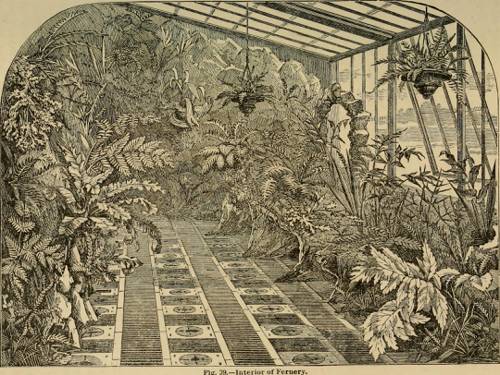
FAQ About Indoor Plant Biomass Management

What is indoor plant biomass management?
Indoor plant biomass management involves optimizing the growth conditions for indoor plants by effectively controlling and recycling their organic waste. This includes managing leftover plant material such as trimmings, leaves, and roots, to enhance the sustainability and aesthetics of indoor environments. The practice aims to maintain healthy plants while minimizing waste and utilizing available resources efficiently.

Why is biomass management important for indoor plants?
Biomass management is crucial for indoor plants as it helps maintain a healthy growing environment. It prevents the accumulation of dead plant material, which can harbor pests and diseases, and encourages efficient use of nutrients. Proper management also helps in resource recycling and can improve air quality by reducing odors associated with plant decay. Overall, it ensures a balanced ecosystem within indoor spaces.

How can I recycle biomass from my indoor plants?
You can recycle biomass from indoor plants by composting. Composting involves decomposing organic matter such as dead leaves, stems, and other plant debris to create nutrient-rich compost that can be used as a natural fertilizer. For indoor plants, using compost bins or small-scale vermicomposting (using worms) can be effective. This not only recycles plant material but also enriches the soil, promoting healthier plant growth.

What are some common methods of managing plant biomass indoors?
Common methods of managing plant biomass indoors include regular pruning, composting, and mulching. Pruning helps control the size of plants and removes dead or diseased parts. Composting recycles organic waste into a usable fertilizer. Mulching can be applied to retain soil moisture, improve fertility, and reduce weed growth using plant materials like shredded leaves or grass clippings.

Can indoor plant biomass be used to improve soil health?
Yes, indoor plant biomass can significantly improve soil health. When properly composted, plant biomass breaks down into humus, a rich material that enhances soil structure, nutrient content, and microbial activity. This leads to better water retention, aeration, and root growth for plants, ultimately contributing to their overall health and productivity.

How does biomass management help in optimizing plant growth conditions?
Biomass management helps in optimizing plant growth conditions by ensuring that plants receive adequate nutrients, space, and light. By removing excess biomass, you prevent overcrowding and competition for resources. The recycling of biomass through compost enhances soil fertility and structure, supporting healthy plant growth and allowing for optimal conditions in terms of humidity and airflow.

What are the environmental benefits of indoor plant biomass management?
Indoor plant biomass management offers several environmental benefits, including reducing landfill waste by repurposing organic matter as compost, enhancing indoor air quality by minimizing decomposing plant materials, and promoting sustainable practices. This approach supports biodiversity by creating microhabitats within the plant environment and helps in conserving water and nutrients through efficient recycling methods.

How often should I prune my indoor plants to manage biomass effectively?
The frequency of pruning depends on the type of plant and its growth rate. Commonly, indoor plants should be pruned every 4-6 weeks to remove dead, diseased, or overgrown parts. Regular inspection of the plants will help determine if they need pruning sooner. Over-pruning should be avoided as it can stress the plants, so always prune to maintain balanced growth.

Is it possible to overcompost indoor plant biomass?
Yes, overcomposting can occur if too much biomass is added at once without proper decomposition time, leading to an imbalance in the compost heap. This can result in unpleasant odors, pests, and insufficient decomposition of materials. It is advisable to add biomass gradually, mix it with other compostable materials, and ensure proper aeration and moisture balance in the compost bin.

What kind of indoor plant biomass material is unsuitable for composting?
Any plant material that is diseased or infested with pests should be avoided in composting, as it can spread the issue further. Additionally, plants treated with chemical pesticides or fertilizers should not be composted, as these chemicals can persist in the compost and negatively affect soil health. Non-biodegradable materials, like plastic plant ties, should also be kept out of compost bins.

How does proper indoor plant biomass management affect air quality?
Effective indoor plant biomass management can improve air quality by minimizing the accumulation of decaying plant materials that can produce unpleasant odors and potentially harmful mold spores. Proper management, including regular cleaning and recycling of biomass, ensures that plants remain healthy and continue to filter and purify the air effectively.

What are the signs that my indoor plants need better biomass management?
Signs that your indoor plants need better biomass management include yellowing or stunted leaves, unusual pest or disease outbreaks, reduced flowering or fruiting, and unpleasant odors in the room. Additionally, if the plants appear crowded or the soil doesn't drain well, these could indicate an accumulation of biomass that needs addressing.

Are there any indoor plants particularly good for biomass recycling?
Plants like Peace Lily, Spider Plant, and Aloe Vera are excellent for biomass recycling as they grow quickly and produce abundant organic material suitable for composting. Herbs such as basil and mint can also be good candidates as they have high biomass production, making them effective for regular harvesting and recycling.

How can I ensure efficient decomposition of indoor plant waste?
To ensure efficient decomposition of indoor plant waste, maintain a balanced compost mix of green (nitrogen-rich) and brown (carbon-rich) materials. Shred large pieces of plant material to increase surface area and promote faster breakdown. Regularly turn or aerate the compost to provide oxygen, and maintain consistent moisture to encourage healthy microbial activity.

Can using plant biomass as mulch benefit indoor plants?
Yes, using plant biomass as mulch can be beneficial for indoor plants. Mulching with materials like shredded leaves or grass clippings helps retain soil moisture, suppress weeds, and add nutrients back into the soil as it decomposes. This can improve the overall health and growth of indoor plants by creating a more stable rooting environment.

How do I prevent pests and mold in my indoor composting setup?
To prevent pests and mold in your indoor composting setup, start by using a well-ventilated compost bin with a tight-fitting lid. Regularly turn the compost to aerate it, and maintain a proper ratio of green to brown materials to avoid excess moisture. Adding sawdust or shredded paper can help absorb moisture and deter pests. Avoid adding meat or dairy products, which can attract unwanted pests.

What technologies are available to help with indoor plant biomass management?
There are various technologies available to assist with indoor plant biomass management, such as smart composting bins that monitor and optimize decomposition conditions. Additionally, apps and digital sensors can help track plant growth, nutrient needs, and waste production, allowing for more precise and efficient management of biomass. Automated pruning tools and compact mulching devices can also facilitate maintenance tasks.

What is the role of microbes in indoor plant biomass management?
Microbes play a crucial role in indoor plant biomass management by breaking down organic material into simpler compounds that plants can absorb. They help decompose plant waste into nutrient-rich compost, enhancing soil health and fertility. By maintaining a balanced microbial environment, you can improve the efficiency of biomass recycling and promote healthier plant growth.

How can I measure the success of my indoor plant biomass management strategies?
The success of indoor plant biomass management strategies can be measured by the health and growth rate of your plants, the quality of compost produced, and the reduction in plant waste accumulation. Regularly assessing soil fertility, plant vitality, and the absence of disease or pest outbreaks can indicate effective management. Additionally, a consistently pleasant indoor environment without unpleasant odors suggests successful biomass handling.

What are common challenges faced in indoor plant biomass management?
Common challenges in indoor plant biomass management include ensuring efficient decomposition of biomass in limited space, preventing pest and mold infestations in compost setups, maintaining a proper balance of nutrients, and managing the diverse needs of different plant species simultaneously. Regular monitoring, understanding of composting techniques, and appropriate use of technology can help overcome these challenges.
